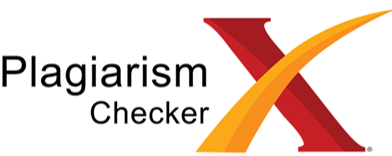Author Guidelines
General Author Guidelines
Manuscripts should be 3000-5000 words in length, written in Indonesian or English, and must be original, unpublished, and not under review for possible publication in other journals. Manuscripts may consist of research, case studies, or literature reviews. Manuscripts should be submitted through the website: https://journal.literasikhatulistiwa.org/index.php/insight/user/register . Manuscripts must be prepared according to the author guidelines and the Template. The writing template can be downloaded here. Submitted manuscripts must be relevant and contribute to the following topics: Education Studies, Curriculum, Learning Media, and Learning Strategies. Manuscripts should include: a 250-word Abstract, Introduction, Methods, Results & Discussion, Conclusion, and References.
Manuscript Structure
- Title: Use a concise and informative title with capitalization for each main word, up to 16 words.
- Affiliation: Provide the full postal address of each author's affiliation, including street name and number, city, postal code, and country.
- Abstract: Should consist of a single paragraph of no more than 250 words. Present the research background and objectives, main results, and conclusions. Avoid using abbreviations and citations.
- Keywords: Include up to six keywords or phrases, sorted alphabetically and separated by semicolons (;). Use specific and relevant terms not found in the title to enhance discoverability in search engines. Avoid overly general or lengthy terms, and end the last keyword with a period (.).
- Introduction: This section should briefly explain the research background (Social Facts, Literature Facts), provide a brief review of related literature, state the originality of the research, and articulate the research objectives. This section also includes factual and current issues, challenges, or needs required by society related to the research objectives.
- Methods: Combine the methods and procedures used into a single narrative. Sufficient information should be provided to allow for the replication of the research. For commercial sources of materials, the company's name, city, and country of origin should be indicated. Published methods should be indicated by reference, with only relevant modifications described here; for example, "The solubility of the powder was evaluated according to the method proposed by Smith (2000), with modifications. In this study, the powder was stirred in 25 mL of distilled water for 5 minutes using a blender."; or "The powder solubility test followed the Smith (2000) method, with modifications in the water volume. The powder was stirred in 25 mL of distilled water for 5 minutes using a blender."
- Results & Discussion: Present the research results. Data should be presented as clearly as possible, in the form of tables or figures if appropriate, although very large tables should be avoided. This section should interpret the results (not repeat them) in the context of previous research. Avoid excessive references to published literature. If necessary, this section can be combined with the Results section into a Results and Discussion section.
- Conclusion: The main conclusions of the research can be presented in a separate Conclusion section or included as a subsection of the Discussion section.
- References: List all items alphabetically. Literature cited during the construction of the paper should be included in the bibliography. For efficiency and clarity, avoid using more than 40 references and fewer than 10, consisting of 70% journal references and 30% book references. Journal references should be from the last 10 years, while book references may be older. This journal uses the APA (American Psychological Association) format











